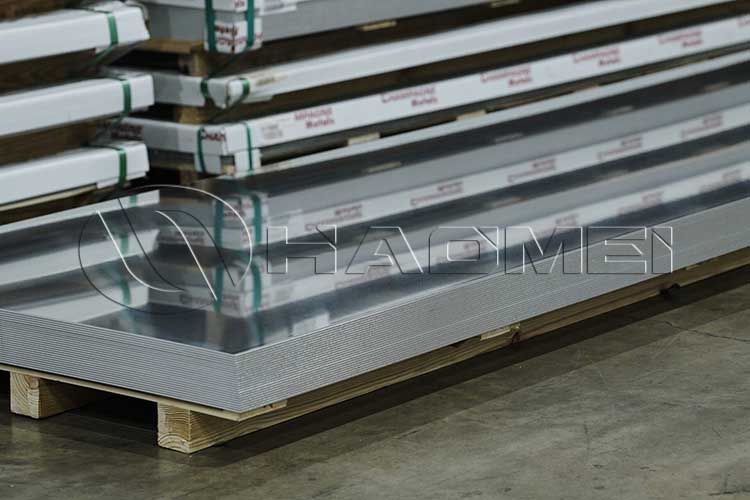
Address: No.14 Waihuan Road, CBD, Zhengzhou, China
Tel: +86-15978414719
Fax: +86-371-65621393
Mail: sale@alumhm.com
Time:2025-07-11
As important members of the aviation aluminum alloy family, 2024 and 2014 aluminum alloys play a key role in aircraft manufacturing. However, there are significant differences in their composition, performance and application. How to correctly choose these two materials is an important issue that aviation engineers must face.

The performance of aluminum alloys depends largely on their chemical composition. 2024 and 2014 aluminum alloys are both aluminum-copper alloys, however, their alloying element contents are different, which directly leads to differences in performance.
The main alloying element of aluminum alloy 2024 is copper (Cu), with a content of about 3.8%-4.9%, and it also contains magnesium (Mg) 1.2%-1.8%, manganese (Mn) 0.3%-1.0%, and a small amount of impurity elements such as silicon (Si) and iron (Fe).
The addition of copper significantly improves the strength of the alloy. Through solid solution strengthening and aging hardening, 2024 aluminum alloy has higher strength and hardness; magnesium further strengthens the alloy and improves its toughness; manganese helps to improve the corrosion resistance and processing properties of the alloy.
2014 aluminum alloy also uses copper as the main alloying element, with a copper content of 3.9%-5.0%, slightly higher than 2024 aluminum alloy. In addition, it also contains 0.5%-1.2% silicon, 0.4%-1.2% magnesium, and a certain amount of iron, manganese and other elements. Compared with 2024, 2014 aluminum alloy has a higher silicon content, which makes it have better casting performance and high temperature performance. However, due to the combined influence of the type and content of alloying elements, 2014 aluminum alloy is different from 2024 aluminum alloy in some properties.
Strength and hardness
In terms of strength, 2024 aluminum alloy performs well. After solution treatment and aging treatment, its tensile strength can reach about 480MPa, yield strength is about 310MPa, and Brinell hardness (HB) is about 120. This high strength enables it to withstand large loads and is suitable for manufacturing key structural components of aircraft, such as wing beams, fuselage frames, etc.
The strength of 2014 aluminum alloy is also not inferior, with a tensile strength of up to 430MPa, a yield strength of 270MPa, and a Brinell hardness of 110. Although the overall strength is slightly lower than that of 2024 aluminum alloy, 2014 aluminum alloy can also play an important role in some occasions with high strength requirements and good processing performance, such as high-strength bolts of aircraft, some mechanical parts that are subject to large stresses, etc.
Plasticity and processing properties
2024 aluminum alloy has moderate plasticity in the quenched and just-quenched state, and is suitable for cold processing, such as bending, stretching and other operations. However, due to its high strength, the requirements for molds and processing equipment during processing are relatively high. When processing complex shapes, special processes and equipment are required to ensure processing accuracy and surface quality.
2014 aluminum alloy has good machinability, and its low hardness makes cutting relatively easy, with less tool wear, and can obtain better processing surface quality. In the hot state, the plasticity of 2014 aluminum alloy is poor and is not suitable for hot processing. When performing hot processing processes such as forging and extrusion, the processing temperature and deformation rate need to be strictly controlled.
Corrosion resistance
Corrosion resistance is one of the important performance indicators of aviation materials. The corrosion resistance of 2024 aluminum alloy is average. Due to the presence of copper, electrochemical corrosion is prone to occur in humid environments or corrosive media. To improve its corrosion resistance, 2024 aluminum alloy is usually anodized, painted, or covered with an aluminum layer.
The corrosion resistance of 2014 aluminum alloy is similar to that of 2024 aluminum alloy, but due to the difference in its alloy composition, the corrosion behavior in certain specific environments may be slightly different. Appropriate protective measures are also needed to increase its service life in harsh environments.
Fatigue performance
In the aviation field, materials need to withstand frequent alternating loads, so fatigue performance is crucial. 2024 aluminum alloy has good fatigue strength and can maintain structural integrity under multiple alternating loads, which makes it widely used in the manufacture of parts that are subjected to repeated stress, such as aircraft wings.
2014 aluminum alloy also has a certain fatigue strength, but it is slightly lower than 2024 aluminum alloy. When designing and using 2014 aluminum alloy parts, it is necessary to pay more attention to the evaluation and optimization of fatigue life, and improve its fatigue resistance through reasonable structural design and process measures.
Due to its excellent comprehensive performance, 2024 aluminum alloy is widely used in the aviation field. In terms of aircraft structural parts, 2024 aluminum alloy is often used to manufacture key components such as wing skins, wing spars, bulkheads, fuselage frames, etc. These components need to withstand various loads during flight.
The high strength, good toughness and fatigue performance of 2024 aluminum alloy can ensure the safety and reliability of the aircraft structure. 2024 aluminum alloy is also commonly used to manufacture aircraft rivets. Its good processing performance and strength can ensure the reliability and stability of rivets when connecting structural parts.
2014 aluminum has unique applications in the aviation field due to its high strength and good machinability. It is often used to manufacture high-strength bolts, nuts and other connectors for aircraft. These connectors need to have good processing performance while ensuring high strength to meet high-precision manufacturing requirements. 2014 aluminum alloy is also used in some large forgings and thick plate structural parts of aircraft. By utilizing its characteristics in the hot working process, parts with complex shapes and high strength requirements are manufactured through forging and other processes.